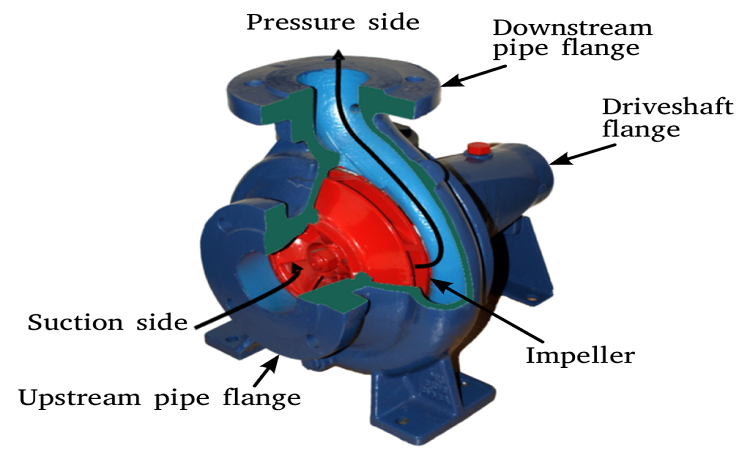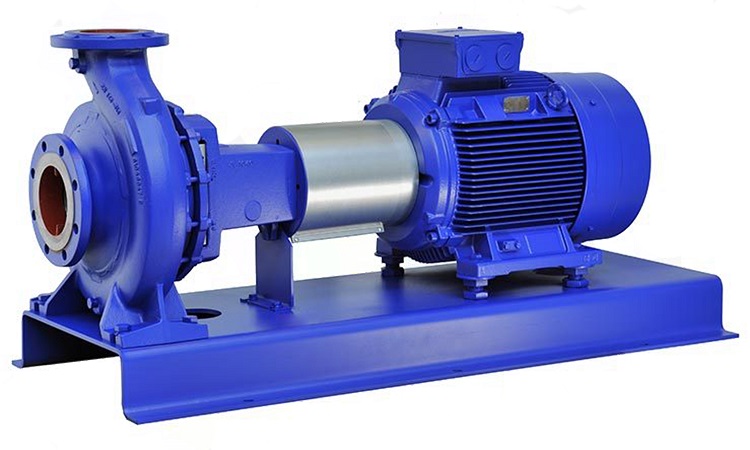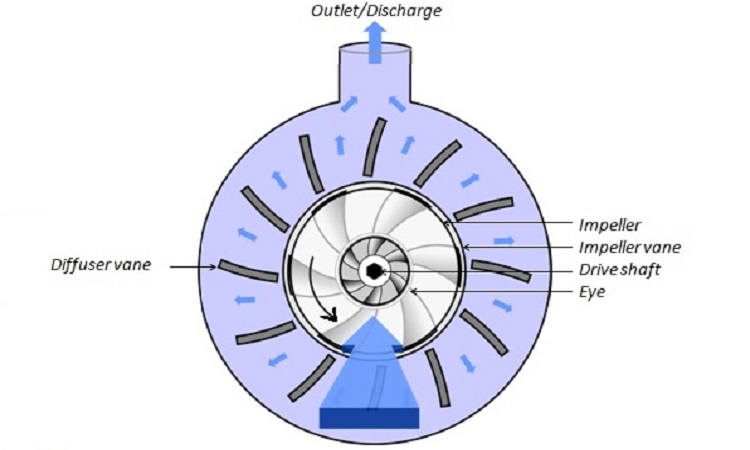



Centrifugal pumps are used to transport fluids by the conversion of rotational kinetic energy to the hydrodynamic energy of the fluid flow. The rotational energy typically comes from an engine or electric motor. They are a sub-class of dynamic axisymmetric work-absorbing turbomachinery. The fluid enters the pump impeller along or near the rotating axis and is accelerated by the impeller, flowing radially outward into a diffuser or volute chamber (casing), from which it exits.
Common uses include water, sewage, agriculture, petroleum, and petrochemical pumping. Centrifugal pumps are often chosen for their high flow rate capabilities, abrasive solution compatibility, mixing potential, and relatively simple engineering.
API 610 classifies various types of centrifugal pumps which are primarily divided into three groups: OH, BB & VS.
OH – Overhung pumps – The impellers of these pumps overhang a radial bearing and so the support must take care of all forces, including the overhung mass and the rotor dynamic and hydraulic forces.
BB – Between bearing pumps – The impellers of these pumps are suspended between the two supports with the impeller placed horizontally, in the same orientation as the bearings.
VS – Vertically suspended pumps – The casing and impellers of these pumps are submerged in the pumped fluid, suspended on a vertical column below a support plate at the top of the tank to which the motor and thrust bearing are mounted.
Typical applications for these three types of API 610 pumps are:
OH – Overhung pumps: Produced Water; Feed Pump; Booster Pump; Hydrocarbon Transfer; Condensate
BB – Between bearing pumps: Cooling Water; Boiler Feed; Well Injection; Feed Water; Crude Transfer
VS – Vertically suspended pumps: Open Drain; Closed Drain; Crude Oil Transfer; Firewater; Seawater Lift
